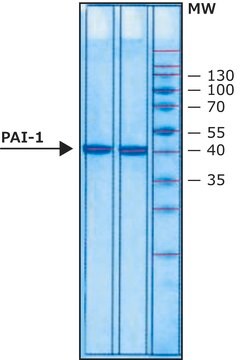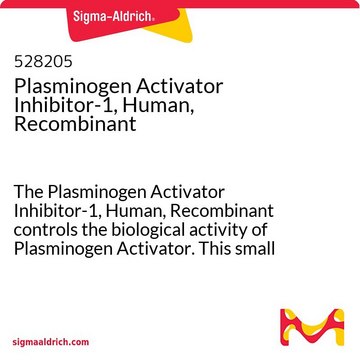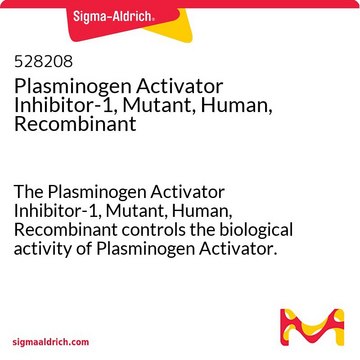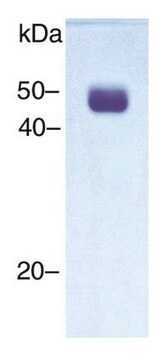CC4075
Human Plasminogen activator inhibitor-1
liquid, ≥98% (SDS-PAGE), suitable for activity assay
Synonyme(s) :
PAI 1, SERPINE1, PAI1
About This Item
Produits recommandés
Nom du produit
Human Plasminogen activator inhibitor-1, recombinant,
Source biologique
human
Niveau de qualité
Essai
≥98% (SDS-PAGE)
Forme
liquid
Fabricant/nom de marque
Chemicon®
Technique(s)
activity assay: suitable
Impuretés
<1 EU/μg endotoxin
Numéro d'accès NCBI
Numéro d'accès UniProt
Conditions d'expédition
dry ice
Description générale
Application
Forme physique
Stockage et stabilité
Remarque sur l'analyse
Informations légales
Clause de non-responsabilité
Code de la classe de stockage
10 - Combustible liquids
Classe de danger pour l'eau (WGK)
WGK 2
Point d'éclair (°F)
Not applicable
Point d'éclair (°C)
Not applicable
Certificats d'analyse (COA)
Recherchez un Certificats d'analyse (COA) en saisissant le numéro de lot du produit. Les numéros de lot figurent sur l'étiquette du produit après les mots "Lot" ou "Batch".
Déjà en possession de ce produit ?
Retrouvez la documentation relative aux produits que vous avez récemment achetés dans la Bibliothèque de documents.
Notre équipe de scientifiques dispose d'une expérience dans tous les secteurs de la recherche, notamment en sciences de la vie, science des matériaux, synthèse chimique, chromatographie, analyse et dans de nombreux autres domaines..
Contacter notre Service technique








